Scenario 2:
After completing the branch activation for all required branches, the network administrator attempts to test connectivity between the various branches and between hubs and branches. The administrator notices a lack of connectivity despite being certain that configurations have been complete. The administrator also observed that several users are reporting intermittent connectivity to some of the some applications they are accessing. Other users are reporting no access to these applications. Other users at some of the branches claim they cannot get to certain public resources. The administrator wants to ensure that all sites can talk to each other and all resources are accessible.
Exhibit.
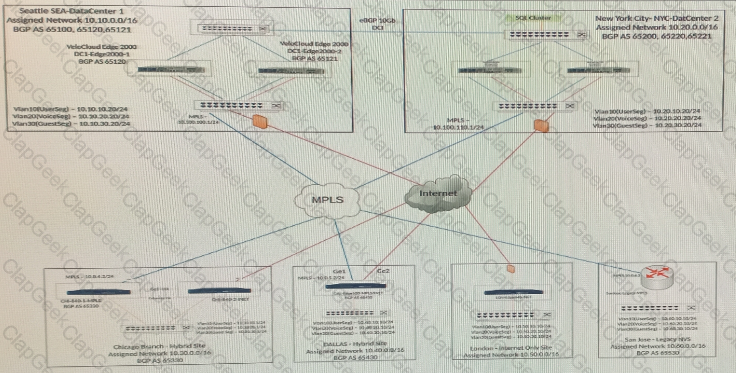
A technician has added Edges to an East Coast Profile. These Edges are not able to communicate via dynamic tunnels to Edges in the West_Coast profile. The technician has noticed that some Edges are able to establish dynamic tunnels.
What could be preventing Edges from being able to establish dynamic tunnels?
Scenario 3:
After resolving numerous connectivity Issues throughout the various branch sites, connectivity between applications and users is finally present. The network administrator is informed that during certain tests, applications are not performing as they are expected to. Users report that call quality has not fully improved and that some of their calls either drop or have poor voice quality where the conversation is breaking up. Other users are noticing that file transfers are slower than expect. A group of users from a few sites have reported slowness in accessing internal and external applications.
Exhibit.
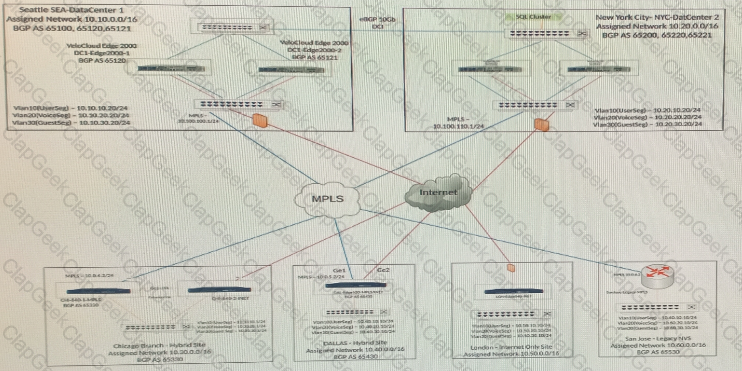
Users at a remote office are complaining about poor performance with certain applications. The network administrator has already verified the configuration is correct.
Which two parameters should the administrator review to troubleshoot this issue? (Choose two.)
Scenario 3:
After resolving numerous connectivity Issues throughout the various branch sites, connectivity between applications and users is finally present- The network administrator is informed (hat during certain tests, applications are not performing as they are expected to. Users report that call quality has not fully improved and that some of their calls either drop or have poor voice quality where the conversation is breaking up. Other users are noticing that file transfers are slower than expect. A group of users from a few sites have reported slowness in accessing internal and external applications.
Exhibit.
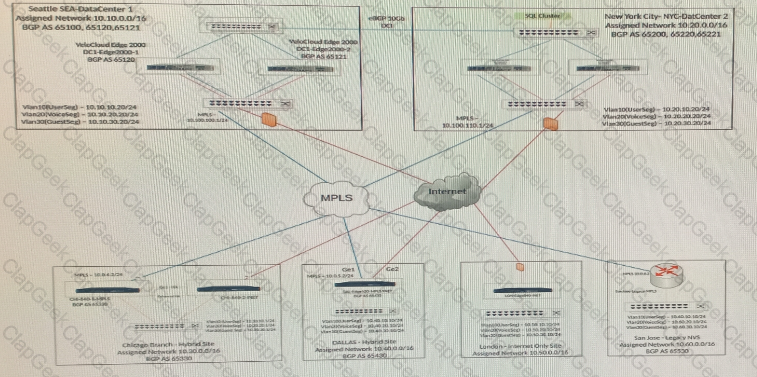
Which metrics can a network administrator verify in the QoE screen to determine the overall health of Underlay and Overlay?
Scenario 2:
After completing the branch activation activities for all required branches, the network administrator attempts to test connectivity between the various branches and between the hubs and branches. The administrator notices a lack of connectivity despite being certain that configurations have been complete. The administrator also observed that several users are reporting intermittent connectivity to some of the applications they are accessing. Other users are reporting no access to these applications. Other users at some of the branches claim they cannot get to certain public resources. The administrator wants to ensure that all sites can talk to each other and all resources are accessible.
Exhibit.
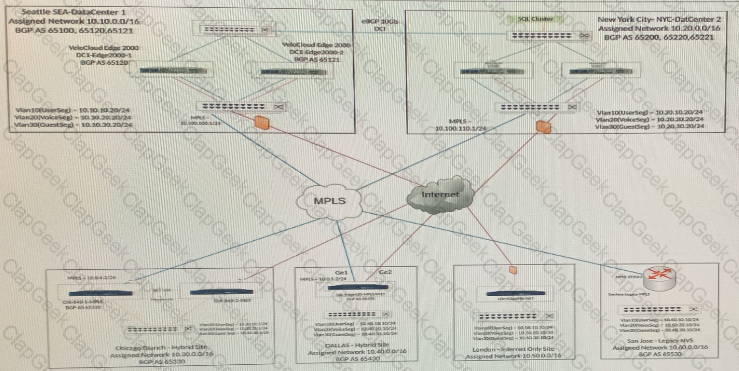
When checking connectivity from the San Jose branch, all users report that they can reach certain resources at the main data center. They are unable to reach locations elsewhere. The network administrator investigates and first looks at the Overlay Flow Control (OFC) Table.
What should the network administrator look for next to determine what the issue might be?
Scenario 3:
After resolving numerous connectivity issues throughout the various branch sites, connectivity between applications and users is finally present. The network administrator is informed that during certain tests, applications are not performing as they are expected lo. Users report that call quality has not fully improved and that some of their calls either drop or have poor voice quality where the conversation is breaking up. Other users are noticing that file transfers are slower than expect. A group of users from a few sites have reported slowness in accessing internal and external applications.
Exhibit.
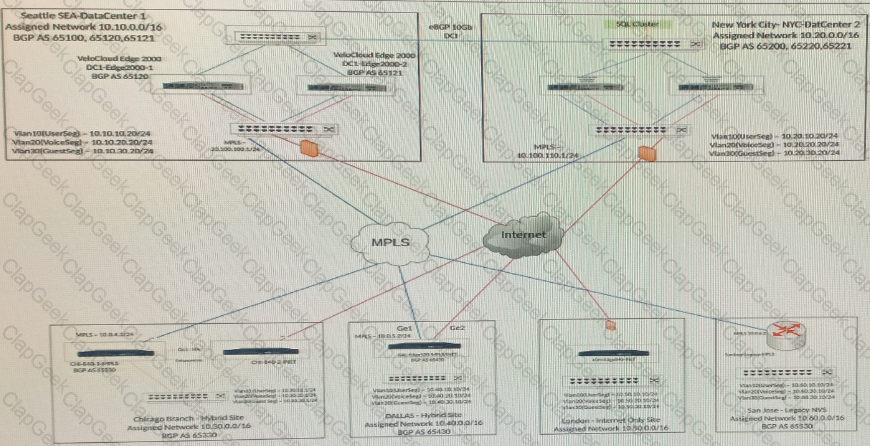
Users are complaining that web pages to certain web sites are very slow to load and at times unresponsive. The network administrator has verified that the traffic is going correctly out the underlay.
What should the administrator check next?
Scenario 3:
After resolving numerous connectivity Issues throughout the various branch sites, connectivity between applications and users is finally present. The network administrator is informed that during certain tests, applications are not performing as they are expected to. Users report that call quality has not fully improved and that some of their calls either drop or have poor voice quality where the conversation is breaking up. Other users are noticing that file transfers are slower than expect. A group of users from a few sites have reported slowness in accessing internal and external applications.
Exhibit.
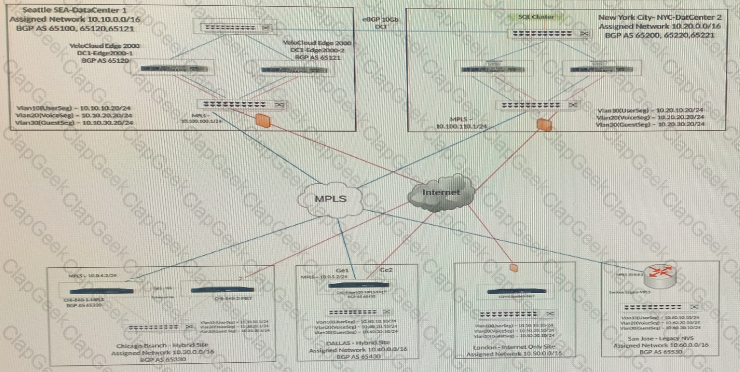
The network administrator has been made aware that Chicago is receiving traffic from non-SD-WAN sites, bottlenecking Chicago's interfaces. The network administrator's VMware SE has mentioned using the uplink feature to help resolve this.
What are two ways the uplink feature should be used in this scenario? (Choose two.)
Scenario 1:
A network administrator is tasked with enabling SO-WAN at three branch locations. A topology has been provided for reference. For each site, the administrator is having issues bringing edges online, as another administrator has gone ahead and created a configuration ahead of time. The organization has several branch sites. One is an Internet-only site and two are Hybrid locations with both internet and MPLS. The last location is MPLS only. There are hub data center locations in this environment as well. Please refer to the topology.
After the network administrator has determined the problem with the Edge not being able to access the Internet, the administrator receives another error stating that the SD-WAN Orchestrator is still not reachable.
The VCO's address is Amer-vcoOl.velocloud.net.
Refer to the Exhibit(s).
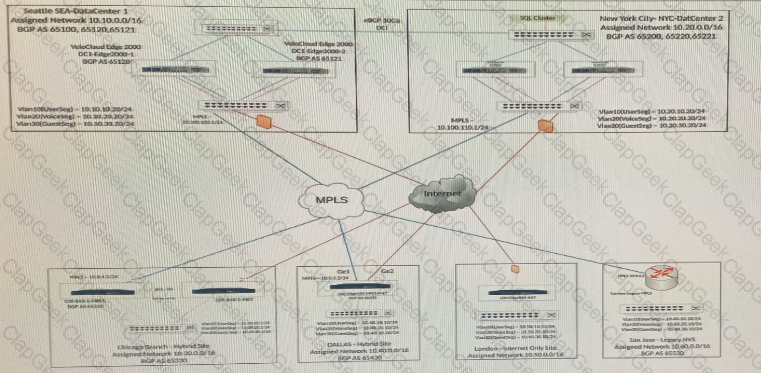
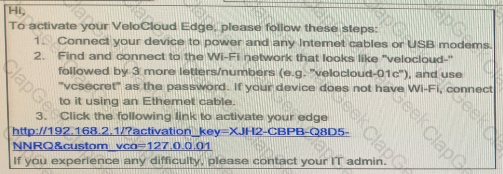
What might be disallowing the Edge to communicate with the Orchestrator?